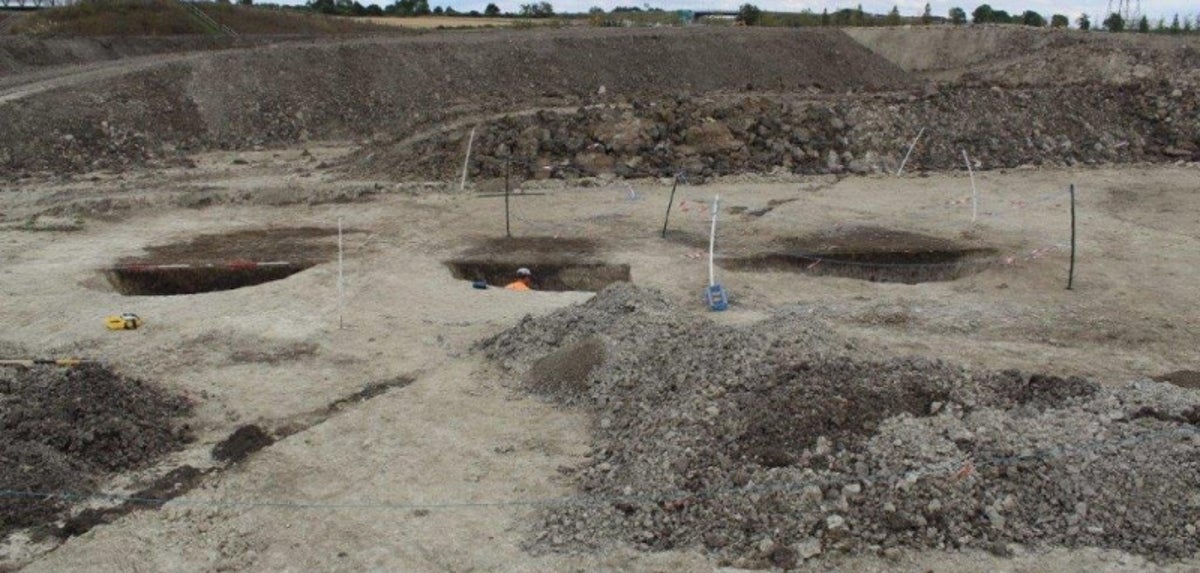
Archaeologists are bewildered by the discovery of over two dozen large prehistoric pits near London dated to about 8,500 to 7,700 years ago in what they claim to be a “nationally important prehistoric site”.
These pits from Linmere in Bedfordshire have been dated to the Middle Stone Age – a period from which very little is known on what life was like at the time in Britain.
The unusual pits, measuring up to 5m wide and 1.85m deep, were discovered during two separate digs by the Museum of London Archaeology (MOLA) and the company Albion Archaeology and dated to likely been dug around the late Mesolithic period 9,000 - 6,000 years ago.
They were all found to be round, having very steep sides with some flared out at the bottom into a wider base, suggesting it would have taken the nomadic hunter-gatherers of the time a lot of effort to dig even a single pit with their tools.
Archaeologists also found that these pits appear to be laid out in multiple straight lines – up to 500m long – clustered around former stream channels.
“The Linmere Mesolithic pits are a very exciting discovery. While we know of other large and enigmatic pits dug by hunter-gatherers from elsewhere in Britain, including at Stonehenge, the Linmere pits are striking because of their number and the wide area they cover,” professor Joshua Pollard from Southampton University said in a blog post by MOLA.
Researchers say “very few” Mesolithic sites in the UK are this substantial as previous evidence of human existence from this period is often slim, consisting mainly of flint tools and occasional butchered animal remains.
Previous studies have shown that during this period ice sheets covering much of the country retreated and sea levels rose.
This was likely a crucial time of transformation in the UK’s past when melting ice cut Britain off from mainland Europe.
While similar pits have been found in sites across Britain and France, these were mostly in sparse numbers, scientists say.
Even the Stonehenge site has been found to have similar pits but of these only five were dated to this Mesolithic period.
Archaeologists are unclear why the hunter gatherers of the time would have dug so many pits in Linmere.
Remains of animal bones, including those of wild species such as aurochs, marten, deer and boar unearthed in these pits, suggest they were likely used in hunting or for storing food.
But researchers say based on the shape and size of these pits that these theories are unlikely.
The effort required to construct them and the fact that they aligned next to water indicate they may have some ritual or special significance, scientists say.
Researchers are currently studying whether the pits are aligned on any major celestial events such as the solstice.







